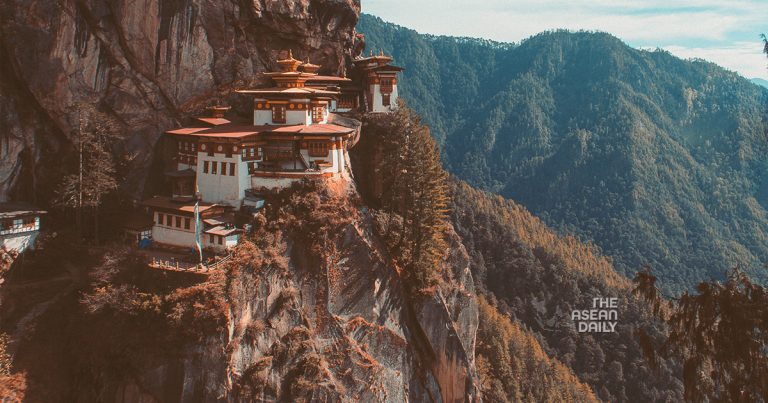26-8-2023 (THIMPHU) The picturesque kingdom of Bhutan has announced plans to slash its daily tourist fee by 50% in an attempt to revitalize its struggling tourism industry, which has been grappling to recover from the impact of COVID-19 restrictions that were lifted a year ago.
The country had increased its “Sustainable Development Fee” from $65 to $200 per visitor per night in September last year, citing the need to offset the carbon footprint generated by tourists. However, in a recent statement released late on Friday (Aug 25), the government revealed that the new rate of $100 per night would be implemented from September and remain in effect for the next four years.
The decision to reduce the fee was motivated by the recognition of the tourism sector’s significant role in generating employment opportunities, earning foreign exchange, and contributing to overall economic growth, the government stated.
Having remained isolated for many generations, Bhutan opened its doors to tourists in 1974, welcoming a modest number of 300 visitors in its inaugural year. Since then, the figures have steadily increased, with official data revealing that the number of tourists reached 315,600 in 2019, marking a 15.1% rise from the previous year.
Bhutan has long been cautious about the potential consequences of mass tourism and has taken measures to preserve the sanctity of its majestic peaks by prohibiting mountain climbing activities. Consequently, the high tourist fee has acted as a deterrent, primarily attracting affluent travelers, resulting in significantly fewer visitors compared to neighboring Nepal.
Nonetheless, Bhutan aspires to elevate the contribution of tourism to its $3 billion economy from the current 5% to an ambitious 20%.
Dorji Dhradhul, the director general of the Department of Tourism, expressed optimism that the reduction in fees would lead to an upswing in tourist arrivals during the peak season, which spans from September to December and encompasses numerous religious and cultural events in the predominantly Buddhist nation.
In June, the Bhutanese government eased regulations concerning the duration of stays and fees for tourists; however, the anticipated surge in visitor numbers did not materialize as expected.
Dhradhul revealed that since January, Bhutan had welcomed over 56,000 tourists, but a significant portion—around 42,000—consisted of Indian nationals who benefit from a reduced fee of 1,200 Indian rupees ($14.5) per day.
The tourism industry in Bhutan currently employs approximately 50,000 locals and prior to the pandemic, it generated approximately $84 million per year in foreign exchange.




